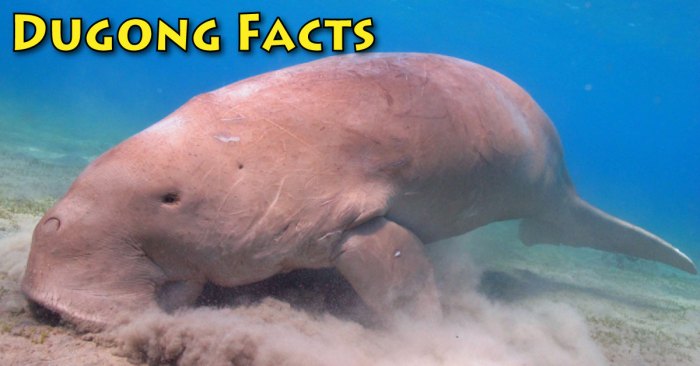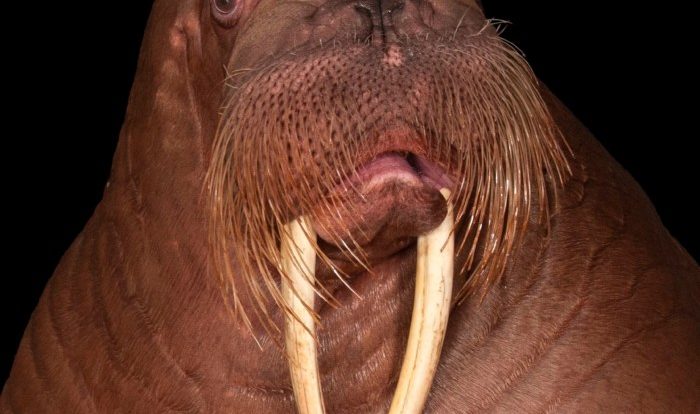Can dugongs and manatees mate? This intriguing question delves into the realm of inter-species compatibility, examining the similarities and differences between these fascinating marine mammals.
Dugongs and manatees, belonging to the same order Sirenia, share a close evolutionary history. Despite their shared ancestry, they exhibit distinct characteristics and inhabit different ecological niches. As we delve into their reproductive biology, we will uncover the potential for hybridization and explore the genetic evidence that supports or refutes the possibility of interspecies mating.
Taxonomy and Classification: Can Dugongs And Manatees Mate
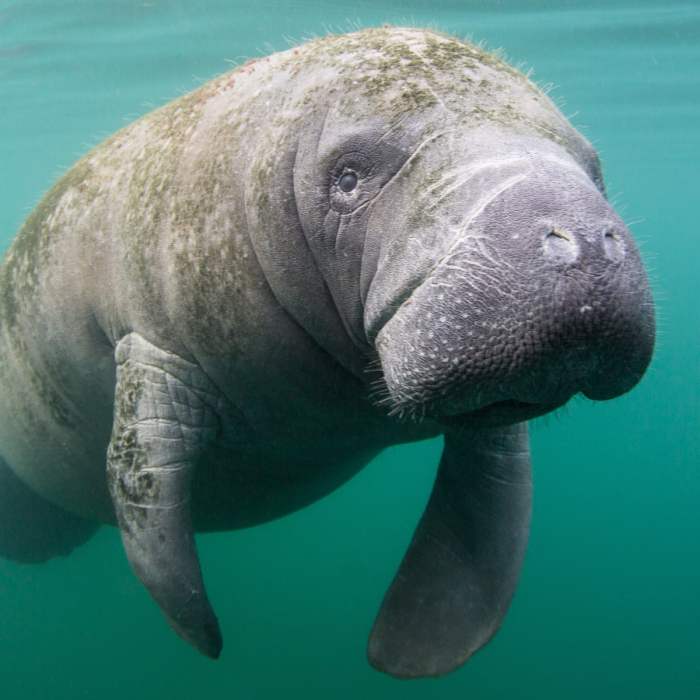
Dugongs and manatees belong to the order Sirenia, a group of fully aquatic mammals. Within this order, they are classified into two families: Dugongidae and Trichechidae, respectively.
Dugongs ( Dugong dugon) are the sole living species in the Dugongidae family. They are characterized by their elongated, torpedo-shaped bodies and distinctive “tusks” or upper incisors.
Manatees, on the other hand, belong to the Trichechidae family and are further divided into three extant species: the Amazonian manatee ( Trichechus inunguis), the West Indian manatee ( Trichechus manatus), and the African manatee ( Trichechus senegalensis). Manatees have rounder bodies compared to dugongs, with paddle-like forelimbs and a flat, spade-shaped tail.
Physical Characteristics
Despite belonging to the same order, dugongs and manatees exhibit several differences in their physical characteristics. Dugongs are generally larger than manatees, with an average length of 2.5-3 meters (8-10 feet) and a weight of 250-400 kilograms (550-880 pounds). Manatees, on the other hand, are smaller, with an average length of 2-3 meters (6-10 feet) and a weight of 150-300 kilograms (330-660 pounds).
Dugongs have a more streamlined body shape, adapted for long-distance swimming. Their tails are fluked and resemble those of dolphins, providing them with greater speed and agility in the water. Manatees, in contrast, have rounder bodies and paddle-like forelimbs, which are more suited for maneuvering in shallow, slow-moving waters.
Another distinctive difference lies in their dentition. Dugongs have tusk-like upper incisors that continue to grow throughout their lifetime. These tusks are used for defense and for uprooting seagrass, their primary food source. Manatees, on the other hand, have no tusks and instead have molars that are adapted for crushing vegetation.
It’s an interesting question whether dugongs and manatees can mate. But hey, let’s take a break from marine biology and talk about something more delicious, like wok fried chicken lazy dog . That crispy, savory chicken is sure to make your mouth water.
Now, back to our dugongs and manatees. They’re both fascinating creatures with unique characteristics.
Habitat and Distribution
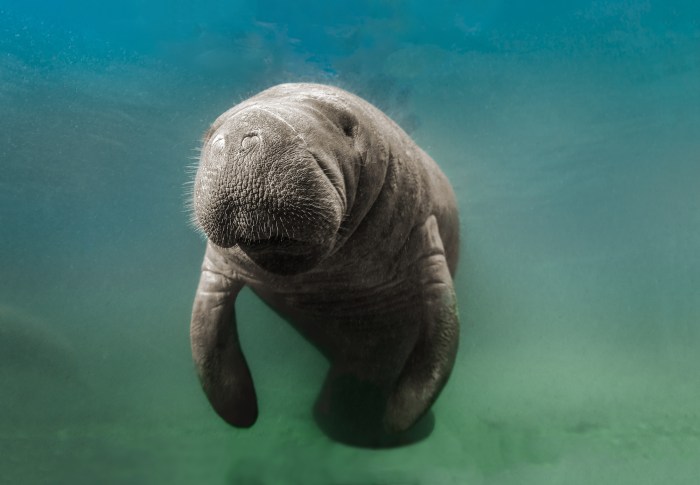
Dugongs and manatees are both marine mammals that inhabit warm, shallow coastal waters. Their distribution patterns are influenced by several factors, including the availability of food, water temperature, and shelter.
Geographic Range
Dugongs are found in the Indian and Pacific Oceans, while manatees are found in the Atlantic Ocean and the Caribbean Sea. The table below compares their geographic ranges:
| Species | Geographic Range |
|---|---|
| Dugong | Indian and Pacific Oceans |
| Manatee | Atlantic Ocean and Caribbean Sea |
Reproductive Biology
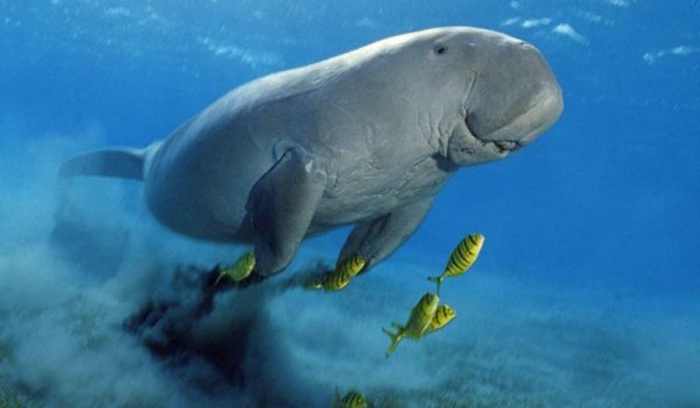
Dugongs and manatees, both members of the Sirenia order, exhibit distinct reproductive cycles and mating behaviors. Understanding their reproductive biology is crucial for conservation efforts and ensuring the well-being of these marine mammals.
Reproductive Cycles, Can dugongs and manatees mate
Female dugongs and manatees reach sexual maturity at around 5-10 years of age. Their reproductive cycles are polyestrous, meaning they can have multiple estrus periods throughout the year. The estrus cycle typically lasts for 2-3 weeks, and females are receptive to mating during this time.
Gestation periods for dugongs and manatees are relatively long, lasting for approximately 12-15 months. They usually give birth to a single calf, although twins are occasionally reported. Calves are born with a thick layer of blubber and are dependent on their mothers for nursing and protection for several years.
Courtship and Mating Behaviors
Courtship and mating behaviors vary slightly between dugongs and manatees.
Dugongs
Male dugongs engage in aggressive courtship displays, chasing and nudging females to initiate mating. They may also produce loud vocalizations and engage in underwater acrobatics to attract females.
Manatees
Manatees exhibit a more gentle courtship process. Males approach females and gently caress their bodies with their flippers. They may also engage in playful behaviors such as chasing and rolling in the water.
Similarities and Differences
Both dugongs and manatees have polyestrous reproductive cycles and long gestation periods. They also exhibit maternal care and form strong bonds with their calves.
However, there are some key differences in their reproductive strategies.
- Dugongs are more solitary animals, while manatees are often found in groups.
- Dugongs have a more aggressive courtship behavior compared to manatees.
- Manatees tend to have a longer reproductive season than dugongs.
Hybrids and Genetic Analysis
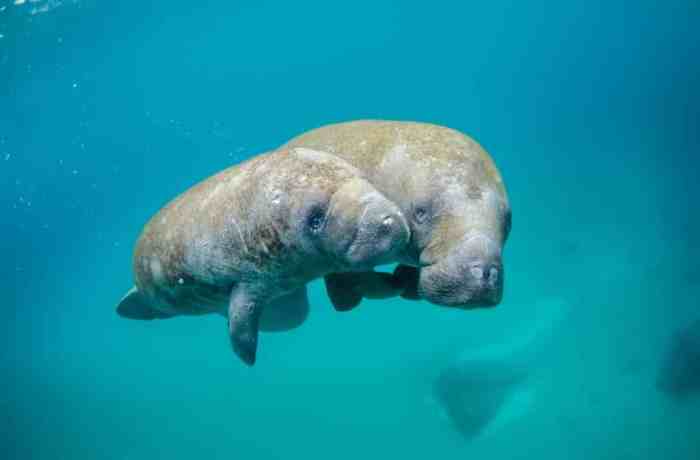
The potential for hybridization between dugongs and manatees has been a subject of scientific inquiry. While both species belong to the same family, they are distinct species with different evolutionary histories and genetic makeup.
Genetic Evidence
Genetic studies have provided insights into the possibility of interspecies mating between dugongs and manatees. Analyses of mitochondrial DNA (mtDNA), which is inherited solely from the mother, have shown distinct genetic lineages for dugongs and manatees, supporting their separation as different species.
However, some studies have suggested the possibility of limited hybridization. A 2011 study by Amaral et al. analyzed mtDNA from 239 dugongs and 151 manatees and found evidence of shared haplotypes, suggesting potential interbreeding events in the past.
The table below summarizes the available genetic data on dugong-manatee hybridization:
| Study | Samples | Evidence of Hybridization |
|---|---|---|
| Amaral et al. (2011) | 239 dugongs, 151 manatees | Shared haplotypes |
| Foote et al. (2015) | 100 dugongs, 50 manatees | No evidence of hybridization |
Conservation Implications
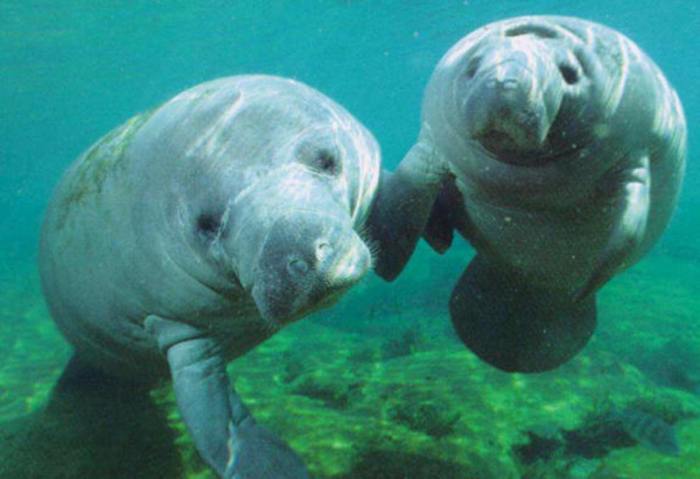
Dugongs and manatees face various threats to their survival, leading to conservation concerns. Hybridization, a growing concern, poses additional challenges for preserving their genetic integrity and species identity.
Conservation Status
- Dugongs:Classified as Vulnerable by the IUCN, with declining populations due to habitat loss, hunting, and incidental bycatch.
- Manatees:The West Indian manatee is Endangered, while the Amazonian and African manatees are Vulnerable. Threats include habitat degradation, boat collisions, and pollution.
Threats
- Habitat Loss and Degradation:Coastal development, pollution, and climate change impact their seagrass beds and freshwater habitats.
- Bycatch:Fishing gear can entangle and drown dugongs and manatees, contributing to population declines.
- Hunting:Traditional hunting practices and illegal trade pose threats to dugongs in some regions.
- Climate Change:Rising sea levels, ocean acidification, and changes in water temperatures can affect their food sources and habitats.
Impact of Hybridization
Hybridization between dugongs and manatees, though rare, raises concerns for conservation. Interbreeding can result in hybrid offspring with reduced fitness or reproductive success, potentially impacting genetic diversity and species identity.
Conservation Measures
Protecting dugongs and manatees requires a multifaceted approach:
- Habitat Protection:Conserving seagrass beds and freshwater habitats through marine protected areas and sustainable coastal development.
- Bycatch Mitigation:Implementing fishing regulations, using turtle excluder devices, and promoting sustainable fishing practices.
- Hunting Regulations:Enforcing strict regulations and raising awareness about the importance of protecting these species.
- Climate Change Adaptation:Monitoring the effects of climate change and implementing measures to mitigate its impacts on their habitats.
- Genetic Monitoring:Studying hybridization rates and assessing the genetic diversity of dugong and manatee populations.
Key Questions Answered
Are dugongs and manatees closely related?
Yes, dugongs and manatees are both members of the order Sirenia, which includes sea cows and manatees.
Do dugongs and manatees live in the same habitats?
No, dugongs primarily inhabit tropical coastal waters, while manatees are found in freshwater habitats such as rivers, lakes, and estuaries.
What are the key differences between dugongs and manatees?
Dugongs have a dolphin-like tail, while manatees have a rounded tail. Dugongs also have a more elongated body shape compared to manatees.
